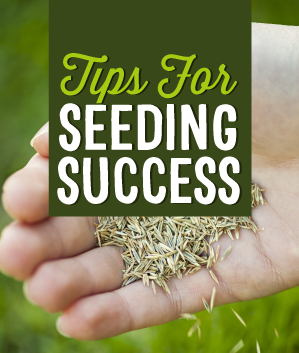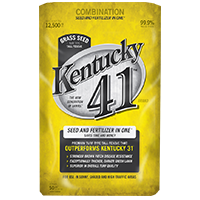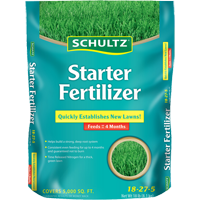Starting a lawn by applying grass seed is much easier than you think; don’t let the idea intimidate you. However, it is important to treat the beginning stages with the proper care and direction. The following steps and methods will help ensure that your lawn gets off to a good start.
- The science behind the seed is very important. Choosing a quality seed, such as Kentucky 41, with great genes is critical. You need a seed that’s bred with genetic traits such as excellent cold tolerance, superior brown patch resistance, and early spring green up. Then, select the grass seed variety that will suit your climate and location. Make sure the maintenance and traffic durability fits your personal needs as well.
- Start by choosing a week that has no rain in the forecast. Choose a day that is somewhat dry, calm, and sunny. This will help prevent the seeds from being blown or washed away.
- Create the optimal planting area by loosening the soil and clearing any thatch or debris. You can do this with a rake or a tiller. This process exposes the soil for planting. For added nutrients, mix a Grass Seed Starter Soil in the top 2-3 inches of native soil. Some starter soils include a starter fertilizer to accelerate root growth and development.
- Crucial Tip: Grass seed needs nitrogen to grow a full, healthy lawn. No exceptions. The best way to accomplish this is by using a grass seed already infused with nitrogen. Nitrofuze Technology has the perfect amount of nitrogen adhered to the grass seed for optimal fertilizing. It also seals in the nitrogen with a water-absorbent coating for maximum moisture retention. Otherwise, you can add a Starter Fertilizer to the native soil after loosening and clearing (Tip 3). Apply at the recommended rate on the fertilizer packaging.
- Begin planting your seed using a drop or rotary spreader to ensure even distribution over the area. Based on your spreader and coverage area, find the application rate on the grass seed packaging.
- To prevent the seed from moving, cover it with about a 1/3 inch of dressing material (Grass Seed Starter Soil). Lightly rake and roll the surface area for good seed-to-soil contact.
- Gently water immediately after planting and continue to keep the soil dark with moisture until the grass begins to grow. When grass is 1-2 inches, water every 3 to 5 days or as needed depending on weather conditions.










